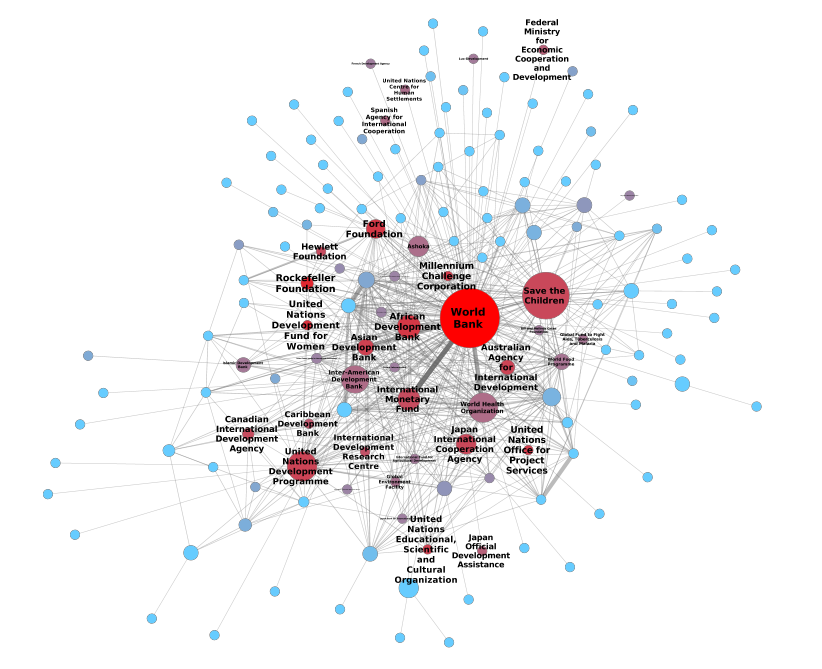Aid 2.0
After the era of large multinational empires (British, Spanish, Portuguese French), the number of sovereign states exploded. The international community realized that many states were being left behind in their development efforts. A new problem, international development, was created and nobody really had a clue about how to solve it. Eventually, the solution started by international organizations such as the UN or the World Bank culminated on the Millennium Development Goals (MDGs): a set of general objectives that humanity decided to achieve. The MDGs are obviously very noble. Nobody can argue against eradicating hunger or promoting gender equality. The real problem is that the logic that produced them is quite flawed. Some thousands of people met around 2000 and decided that those eight points were the most important global issues. That was probably even true, but what about particular countries, where none of the eight MDGs is crucial, but a ninth is? More importantly: why the hell am I talking about this?

I am talking about this because, not surprisingly, network science can provide a useful perspective on this topic. And it did, in a paper that I co-authored with Ricardo Hausmann and César Hidalgo, at the Center for International Development in Boston. In the paper we explain that the logic behind MDGs is a classical top-down, or strictly hierarchical, one: there are few centers where all information is collected and these centers direct all efforts towards the most important problems. This implies that (see the above picture):
- The information generated at the bottom level passes through several steps to get to the top, in a perverted telephone game where some information is lost and some noise is introduced;
- If some organization at the bottom level wants to coordinate with somebody else at the same level, it has to pass through several levels even before starting, instead of just creating a direct link.
In this world, if all funds for health are allocated to fighting HIV and child mortality, countries that do not have these problems but face, say, a cholera or a malaria epidemic are doomed to be left behind.

What it is really necessary is a mechanism with which aid organizations can self-organize, by focusing on the issues they are related to and on the places where they are really needed, without broad and inefficient programs. In this world, a small world, everybody can establish a weak link to connect to anybody else, instead of relying on a cumbersome hierarchy. In an editorial in the Financial Times, Ricardo Hausmann used the Encyclopedia Britannica as a metaphor for representing the top-down approach of the MDGs, against the Wikipedia of a self-organized and distributed system.
The question now is: is it really possible to enable the self-organization of international aid? Or: how do we know what country is related to what development issue, and which organization has an expertise on it? Well, it is not an easy question to answer, but in our paper we try to address it. In the paper we describe a system, based on web crawling (i.e. systematically downloading web pages), that capture the number of times each aid organization mentions an issue or a country in its public documents. That is no different from what Google does with the entire web: creating a global knowledge index that is at your fingertips.
Using this strategy, we can create network maps, like the one above (click to see a higher resolution version), to understand what is the current structure of aid development. We are also able to match aid organizations, developing countries and development issues according to how closely they are related to each other. The possible combinations are still quite high, so to actually use our results it is necessary to create a nice visualization tool. And that’s another thing we did: the Aid Explorer (developed and designed by yours truly).
In the Aid Explorer you can confront organizations, countries and issues and see if they are coordinating as they should. For example, you can check what are the issues related to Nordic Fund. Apparently, Microenterprise is a top priority. So, you can check how Nordic Fund relates to countries, according to how they are related to Microenterprise. That’s a good positive correlation! It means that indeed the Nordic Fund really relates most to the countries that are very related to Microenterprise. If we would have found a negative correlation that would have been bad, because it would have meant that Nordic Fund relates with the wrong countries. A general picture over all issues (or over all countries) of Nordic Fund can also be generated. Summing up these general pictures, we can generate rankings of organizations, countries and issues: the more high relevance and high correlation we observe together, the better.

Hopefully, this is the first step toward an ever more powerful Aid Explorer, that can help organizations to get the maximum bang for their buck and countries to get more visibility for their peculiar issues, without being overlooked by the international community because they are not acting in line with the MDG agenda.

